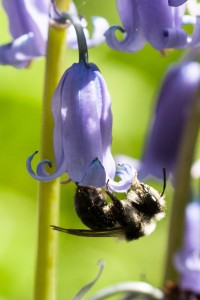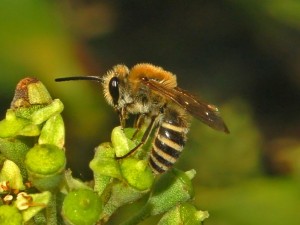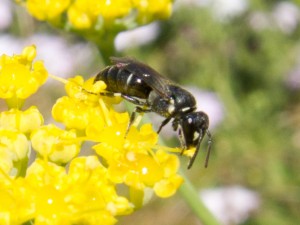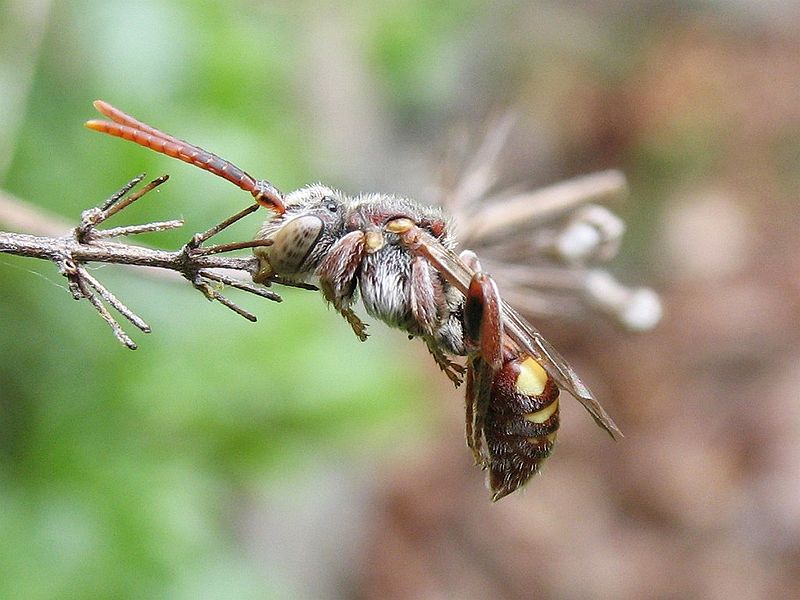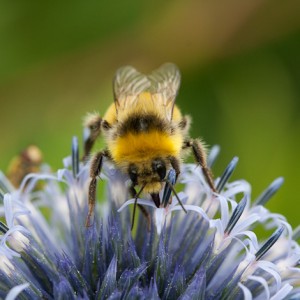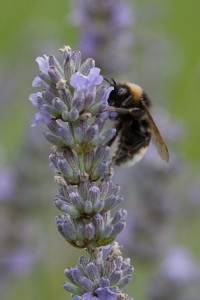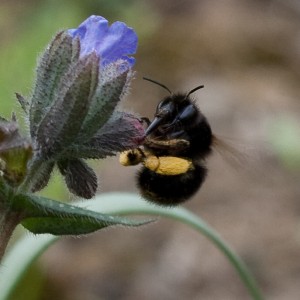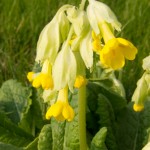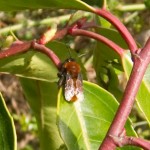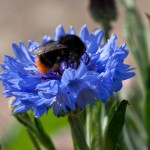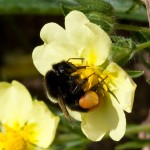Wild bees are pretty amazing creatures. I already knew that – I have the books sitting on my bookshelf and in my wishlist to prove it. But I attended a talk this week that gave me even more reasons to love bees and, hopefully the inspiration to go out and study them in the local area (as there are not that many records for this part of the country).
Most bees are excavators, although some nest in holes in walls (or bee hotels) and some make their nest in empty snail shells (they hide these under sticks they collect – how cool is that?). They provision a cell with pollen, lay an egg and seal it up, then leave more pollen and an egg and onwards until they reach the front. Girl bees will be at the back with more pollen (because they are bigger larvae and bees) and boy bees at the front so they emerge first and are ready when the girls emerge.
One species of furrow bee is sometimes a solitary bee and sometimes a social bee – in the north they are solitary and in the south they are more likely to be social – the queen producing workers to forage whilst she guards the nest.
One solitary bee , Ceratina cyanea, (which unfortunately doesn’t seem to live in Northamptonshire) is fairly unique in a) living in bramble stems and b) surviving the winter as an adult.
Bees also have their parasites and cuckoos – in fact 27% of bee species in this country are brood parasites – that means they take over the host’s nest rather than killing and eating the larvae (although the queen often gets killed). Fortunately, the parasites are rarer than their hosts – otherwise they would soon wipe themselves out. One set of brood parasites are the Nomada bees (that look a lot like wasps) – these wasp-like bees are about the same size as their hosts and find them by smelling their nests. I took these pictures of the Ashy Mining bee and its associated Nomada parasite at work.


There are lots more amazing facts that make solitary and bumble bees worth studying, but I don’t want to reveal all their secrets.
130 species have been recorded in Northamptonshire, but only 80 have been recorded since 2000. Some may have been lost, mainly due to land use change, but some may still be here just waiting to be found. Now where’s my guide book and sweep net?
